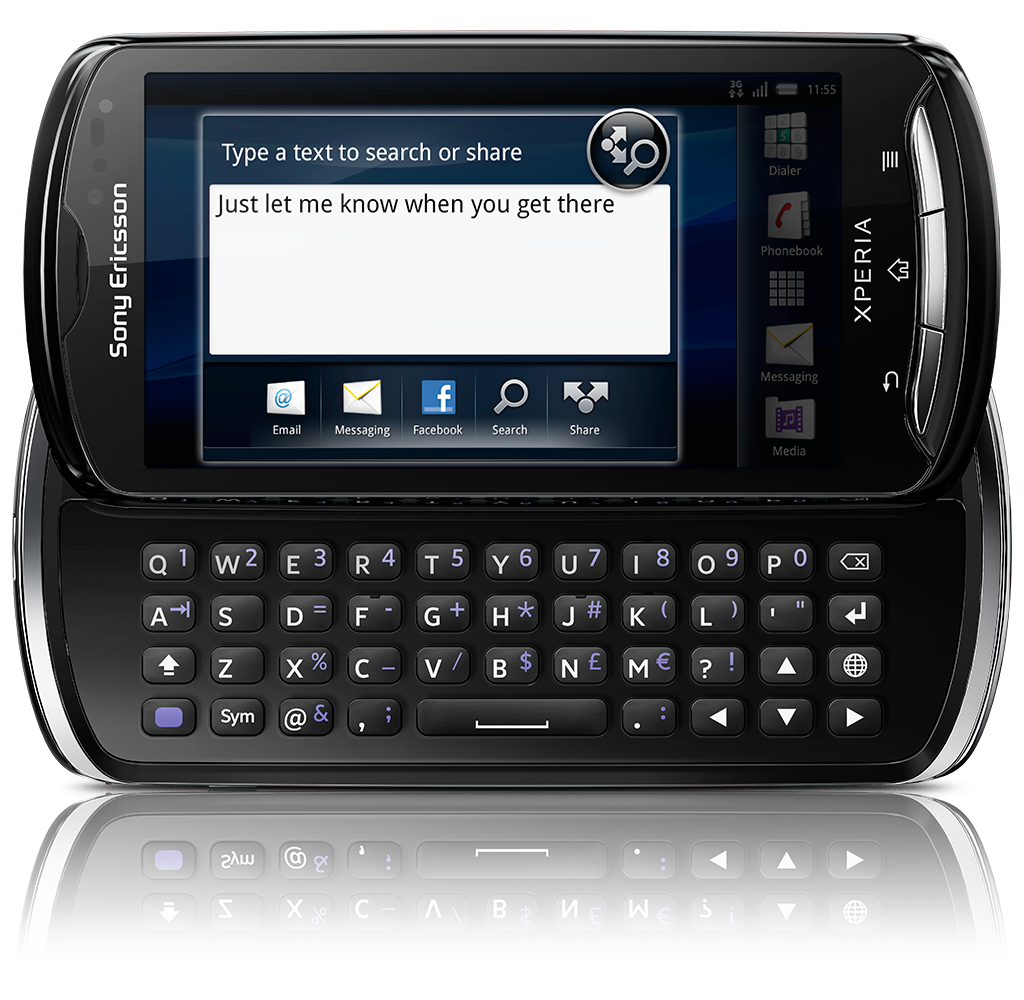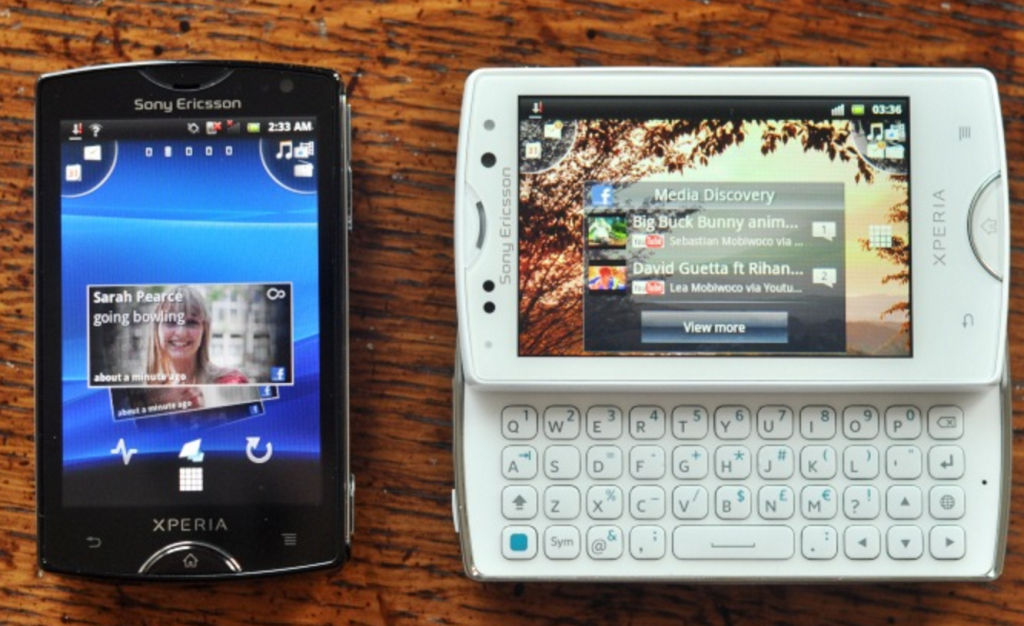Install Android 6.0.1 Marshmallow on Xperia Pro, Mini, Mini Pro with CyanogenMod 13: Sony Ericsson Pro, Xperia Mini, and Xperia Mini Pro can now enjoy the highest version of Android i.e. Android 6.0.1 Marshmallow. Surprised? well, we are not kidding at all. As long as we’ve got some great developers working for this kind of legacy devices, there isn’t going to an end to the lives of these phones.
The greatest thing for Xperia Pro, Xperia Mini and Xperia Mini Pro has been done by XDA recognized developer mikeioannina who’s responsible for pulling out the unofficial builds of CyanogenMod 13 custom ROM based on Android 6.0.1 Marshmallow.
The unofficial CM 13 builds are available for all legacy Xperia devices which came out back in 2011 or 2012. Luckily, Xperia Pro, Xperia Mini, and Xperia Mini Pro are the 3 devices of that league as well.
Those who do not know about the devices mentioned above, we will shed some light on these devices before we head towards the instructions for updating your phone to Android 6.0.1 Marshmallow.

Contents
Sony Ericsson Xperia Pro
Xperia Pro first appeared in February, 2011. This device by Sony touts a 3.7-inch 480p display with 265 ppi. Sony used a scratch-resistant glass to protect its display. Xperia Pro originally ran on Android 2.3 Gingerbread and was later updated to Android 4.0 Ice Cream Sandwich. After ICS, Sony didn’t update the device to any further version of Android due to its hardware limitations. Xperia Pro is powered up with Qualcomm’s Snapdragon S2 CPU clocked at 1.0 GHz backed up by Adreno 205 GPU and a RAM of 512 MB. This device carried an 8 MP shooter at the back and a VGA shooter on the front for secondary video calls.
Sony Ericsson Xperia Mini and Mini Pro:
Xperia Mini and Xperia Mini Pro, Sony’s small and beautiful smartphones were popped up in August 2011. Both these phones have a 3.0-inch display with a resolution of 320 x 480 pixels and 192 ppi.
Xperia Mini and Mini Pro were powered up with Qualcomm’s Snapdragon S2 CPU clocked at 1.0 GHz and supported by Adreno 205 GPU. A RAM of 512 MB was placed inside.
These phones have only 320 and 400 MB internal storage. Xperia Mini and Xperia Mini Pro’s official software support remained limited to Android 4.0 ICS as well. The only difference between Xperia Mini and Xperia Mini Pro is the addition of a horizontal-sliding keyboard on the Xperia Mini Pro. Rest of the devices are almost the same.
CyanogenMod 13 custom Android 6.0.1 Marshmallow:
That was all about these devices. We can now get back to our work. If you own this device, you may want to have the latest Android firmware installed on it. The available CyanogenMod 13 custom ROM has got the features like Camera, Bluetooth, RIL, WiFi, Video working. Radio, ANT+, HDMI and 720P video recording are crashing for now.
If this custom ROM is not stable, we can safely assume that it’s at least close to stable. Using the set of instructions listed here, you can safely install Android 6.0.1 Marshmallow on Sony Ericsson Pro, Mini, Mini Pro with CyanogenMod 13
Precautions / Early preparations:
- This guide is intended for Xperia Pro, Mini, and Mini Pro only. Do not try this on any other device or else you will result in bricking it.
- Your phone must be running the latest available Android 4.0 ICS firmware on it.
- Your phone must be charged over at-least 50% to avoid any mishap during the flashing procedure.
- Use the original data cable to establish a connection between your phone and your PC.
- Unlock Bootloader of Xperia Pro, Mini, and Mini Pro. Here’s How to Unlock Bootloader of Xperia Smartphones
- Install USB Drivers for Xperia Pro, Mini and Mini Pro using the drivers’ installer from the Flashtool installation folder. Download Flashtool from here. After installing USB Drivers, connect the phone to PC using the USB cable so that USB drivers are installed properly and the connection is established properly.
- Install ADB and Fastboot Drivers. | Mac ADB And Fastboot Drivers. To avoid the lengthy installation, use the Minimal ADB and Fastboot tools for your PC to make the installation quick.
- Make a backup of all everything including Contacts, SMS Messages, Call Logs.
- Make a Nandroid Backup if any custom Recovery is installed already. If not, you will find a custom recovery later in this guide. – Guide
- Copy all the media files and anything else stored in the internal memory to a PC before flashing to save this data.
Disclaimer:
THE METHODS INVOLVED IN FLASHING CUSTOM RECOVERIES, ROMS AND ROOTING YOUR PHONE ARE HIGHLY CUSTOM AND MAY RESULT IN BRICKING YOUR DEVICE, AND HAS NOTHING TO DO WITH GOOGLE OR THE DEVICE MANUFACTURER THAT IS SONY IN OUR CASE. ALSO ROOTING YOUR DEVICE WILL VOID ITS WARRANTY AND YOU WILL BE NO LONGER ELIGIBLE FOR ANY KIND OF FREE DEVICE SERVICES BY THE MANUFACTURERS/WARRANTY PROVIDERS. IN CASE OF ANY MISHAP WE MAY NOT BE HELD RESPONSIBLE. FOLLOW THESE INSTRUCTIONS TO THE LETTER TO AVOID ANY MISHAP OR BRICKING. MAKE SURE THAT WHATEVER YOU DO, YOU ARE DOING IT AT YOUR OWN RESPONSIBILITY.
Required Downloads:
- Download the cm-13.0.zip ROM file carefully according to your device.
- HDPI_miniGAPPS-6.0-20160226-tb-signed.zip
Install Android 6.0.1 Marshmallow on Sony Xperia Pro, Mini, Mini Pro:
First of all, we will need to format the SDcard to ext4 or F2FS format. Here are the steps on how to do so.
- Download and install MiniTool Partition on your computer.
- Connect your SD card using a card reader to your PC, if you’re using internal storage, then connect your device to your PC and mount it as mass storage (USB).
- Now launch the MiniTool Partition Wizard on your PC.
- In the MiniTool Partition Wizard, select your SDcard or your connected device and then click on Delete.
- Now click on Create and from the displayed options, configure it as follows.
- Create As: Primary.
- File System: Unformatted.
- Do not touch any other option and leave everything as it is and click on Ok.
- Now hit Apply and click on Yes as soon as a popup comes up.
- Hold on tighter while the process finishes.
- That’s all with the partitioning process.
Next Step:
- Make sure that you’ve followed all the instructions listed above.
- Extract the downloaded cm-13 ROM.zip file and copy boot.img from it to your desktop.
- Rename the downloaded CM-13 ROM.zip file to only “update.zip” and the Gapps.zip file to only “gapps.zip”.
- Copy downloaded CM-13.zip file and Gapps zip to phone’s external memory.
- Now turn off phone wait for 5 seconds.
- Hold volume up button and connect the phone to PC.
- The LED should remain blue, which means that the phone is in fastboot mode.
- Now copy boot.img to Fastboot (platform-tools) folder or Minimal ADB and Fastboot installation folder.
- Open that folder, hold shift button on the keyboard and right-click on the mouse.
- Click on Open Command Window Here.
- Type fastboot devices and press Enter.
- It should only one fastboot connected device in return. If it showing more that one, then disconnect any other connected device or close any Android Emulator. Also, make sure that PC Companion is completely disabled if installed.
- Now type fastboot flash boot boot.img and press Enter.
- Type fastboot reboot and press Enter.
- Disconnect your phone from your PC now.
- While the phone is booting up, press Volume down button repeatedly to enter recovery mode.
- Now in recovery, format system/format data and then format cache. You can find the format options in Advanced / Advanced Wipe options in CWM or TWRP recovery.
- Now in the custom recovery, select Apply Update > Apply from ADB.
- Connect your phone to your PC once again.
- Now in the opened ADB Command line, issue this command: adb sideload update.zip and hit Enter key.
- Once the process has been completed, issue this command: adb sideload gapps.zip.
- Now that the ROM and GApps have been installed, wipe cache and dalvik cache from recovery once again.
- Reboot your phone now. The first reboot may take up to 10-15 minutes.
- That’s all! Best of luck 🙂
That’s all. Just in case you’re stuck with something, reach us out through the comment box below. We will try to help you out at our best.















Hi when i enter adb sideload update.zip its showing me error: device ‘null’ not found
@raphaeldsouza:disqus have you put the .zip file in the storage of your phone? and what is the name of the file? Maybe the file name is not update.zip, it is some example.zip – please cross check it and try again.
The .zip file is named as update.zip itself, by sideload it is able to recognize file name but not able to recognize the device
@raphaeldsouza:disqus If the computer is not recognising the device then you need to check the connection. Try enabling USB debugging mode and disable firewall or antivirus if enabled. Also, use the OEM data cable to connect your phone to your PC.
tried dat thou still running wd same problem bro….
Anyways Thanx for helping
Same here with adb sidload, error : no device. My windows device manager shows an st15i without drivers.
@everybodyknowsshit:disqus Copy it to external SD card, your phone has a card slot so use that.
..but this external SD-Card has to be unfirmatted, as described. Or does it mean: use a second one?
adb sideload C:update.zip
serving: ‘C:update.zip’ (~47%) * failed to read command: No error
cant find the problem. every time it stops at 47% gives this error in the cmd and automatically reboot my device
another querstion: why isn’t it posible anymore to install *.zips with the cyanogenmod-recovery from the sd-card
why should i copy the cm13.zip and the gapps.zip on the external memory when install cm via adb? for me that makes no sense. pls explain maybe i overlook something
mainly because the newest recovery installed via boot.img doesnt have the option “install zip from externel device”
my problem is everytime adb sending status is at 67% my device reboots and the cmd shows an error
When I write “adb sideload update.zip” it says:
Loading ‘update.zip’
* cannot read ‘update.zip’ *
What is wrong?
@henrik_jansson:disqus There was an error in the guide, i couldn’t get to fix.
Copy the update.zip file to the ADB and Fastboot folder and then apply the command. Delete this update.zip file from the internal storage of the phone.
Follow this guide for more clarification: https://techbeasts.com/android-adb-sideload-custom-roms-recoveries-mods/
I fixed it another way.
Instead of writing “update.zip” I wrote “update.zip.zip”. Then it worked. Probably because I used windows 7 in this case, and it hides the file-endings, so when I changed the file-name to “update.zip” it got the name “update.zip.zip”.
But after that I got another problem, the phone get stuck in a bootloop.
I used a 32 GB card, with filesystem unformatted.
So I tried a 2 GB card withe filesystem ext4. Then it worked!
I will now try the 32 GB with ext4 and see if that was the problem, or if it maybe is something wrong with my 32 GB card.
the file HDPI_miniGAPPS-6.0-20160226-tb-signed.zip is down where can i download it i also googled it for quite some time thanks
Here: https://forum.xda-developers.com/android/apps-games/hdpi-google-apps-6-0-1-upd-20160121-t3307611
okay, this method is very confusing.
How you put ROM in SD CARD if it’s UNFORMATTED, let alone access it.
Also this mention TWRP/CWM but nothing describing how’s that even related to this method because this guide mention to flash recovery from CM13 boot.img
@key_lock:disqus There was an error in the guide, i couldn’t get to fix.
Copy the update.zip file to the ADB and Fastboot folder and then apply the command. Delete this update.zip file from the internal storage of the phone.
Follow this guide for more clarification: https://techbeasts.com/android-adb-sideload-custom-roms-recoveries-mods/
it’s fine, I manage to flash it.
While it’s not accurate but the guide still helps alot.
Thank You.
When I go to ROM download page for Xperia mini the is the ROM at the top latest one
I upgraded my st15i and sk17i to this version (android 6.0), but neither one had 3G network. Can anyone help me out on this issue. Many thanks.
If my phone is already rooted (and has apps on the SD card using Link2SD) are the instructions different, or should I use an unrooted phone to start (I have 1 of each)? Also, does the SIM card have to be in when doing these instructions?
I would love to try this but the download links do not work. Are they available anywhere other than the Basketbuild site?
I have the same problem. I’d like to upgrade my sony xperia mini but links don’t work.
Try use the web archive! It still working there